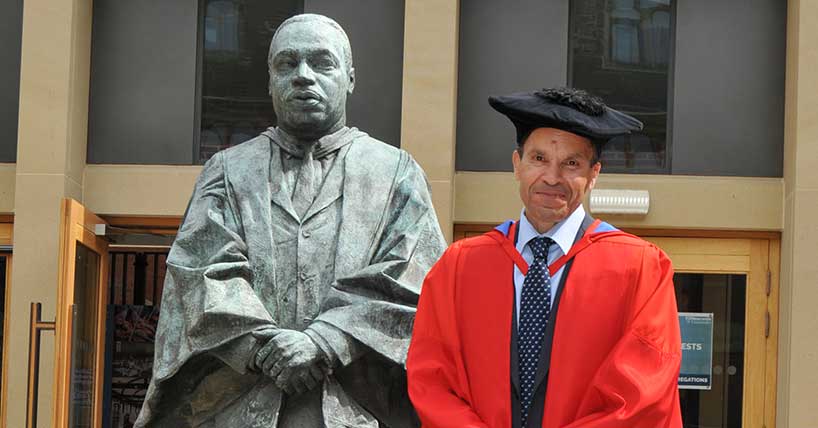TV influence on body image
Watching TV makes us prefer thinner women
Published on: 19 December 2019
The more TV we watch the more we prefer thinner female bodies, according to a new study on body image.
The researchers are calling on TV and advertising bosses to show people of all shapes and sizes in order to reduce the pressure on women and girls to aspire to a ‘thin ideal body’.
The team, involving Newcastle University, worked with men and women from a number of villages in a remote area of Nicaragua in Central America who either had regular or hardly any TV access.

TV's powerful impact
People with very limited access to TV preferred female figures with a higher Body Mass Index (BMI) whereas people who often watched TV preferred thinner bodies.
The villages in Nicaragua were selected because people were very similar in terms of their ecological constraints, such as nutrition, income and education, but had differing access to TV. This meant researchers were able to isolate the effect of TV exposure from the other factors.
The researchers say this is the best evidence to date that TV is having a causal effect on people’s perceptions of body ideals.
The findings, published in the Journal of Personality and Social Psychology, show that TV exposure can have a powerful impact on what people perceive as the ideal body.
The representation of this ‘thin ideal’ in the media can lead to body dissatisfaction and can play a part in the development of eating disorders and depression.
Dr Elizabeth Evans, Lecturer in Psychology at Newcastle University, who was a co-author of the study, said: "Whether TV can influence the body size and shape we aspire to has always been hotly debated. This study provides the strongest evidence yet that TV does lead people to pursue a thinner body.
“The groups taking part in our Nicaraguan study were extremely similar, except one was exposed to more TV than the other: differences in their body ideals are therefore highly likely to be due to TV.
“Implications of the study include the need to have bodies of all different shapes and sizes in media content – we already know that the bodies on TV tend to look similar to one another and many are below the healthy BMI range.
“Body dissatisfaction is extremely common nowadays, and has a number of health consequences, such as increased risk of depression, rigid dieting and eating disorder symptoms.
“People therefore need to be aware that the bodies they see on TV may influence their own body image, and potentially that of impressionable groups, like children.”
People studied in the villages in the part of Nicaragua generally did not have access to magazines or the internet, and none of the participants in the study owned a smartphone. Only those people with electricity supplies to their homes, as well as the money to pay for a TV and subscription, were able to watch TV on a regular basis.
Those people with access to TV watched a mixture of Latin soap operas, Hollywood action movies, music videos, police “car chase” reality shows and the news.
Moral responsibility
Lead author of the research, Professor Lynda Boothroyd, from Durham University’s Psychology Department, said: “TV and advertising bosses have a moral responsibility to use actors, presenters and models of all shapes and sizes and avoid stigmatising larger bodies.
“There needs to be a shift towards a ‘health at every size’ attitude and the media has an important role to play in that.”
A total of 299 men and women from seven villages in the Pearl Lagoon Basin area of Nicaragua took part in the research. They completed a questionnaire about their ethnicity, education, income, hunger, language and TV exposure. They were then asked to rate the attractiveness of pictures of female bodies with varying body shapes and sizes.
In addition to this study, the team also carried out another study among those villagers who had little or no TV access.
Dr Tracey Thornborrow from the University of Lincoln, co-author and field researcher on the project, said: “We showed the villagers a series of pictures, either showing larger women or thinner women. We found that after viewing these images, the villagers’ body ideals adjusted in the same direction.
“Our findings clearly demonstrate that perceptions of attractiveness are highly changeable, and are affected by what we are visually exposed to.”
Professor Boothroyd has previously found the same effect in women in Western societies but this effect had never been tested outside industrialised societies before.
Being able to show that perceptions of attractiveness are this changeable in even ‘media naïve’ participants is a major step forward in our understanding of cultural variation, according to the researchers. “If there’s something that’s universal about attraction, it is how flexible it is,” Professor Boothroyd added.
The research was conducted with colleagues from Newcastle University, Durham University, the University of the Autonomous Regions of the Nicaraguan Caribbean Coast, University of Lincoln, and University of East London. It was funded by the Leverhulme Trust.
Reference
Television consumption drives perceptions of female body attractiveness in a population undergoing technological transition
Boothroyd et al
Journal of Personality and Social Psychology



